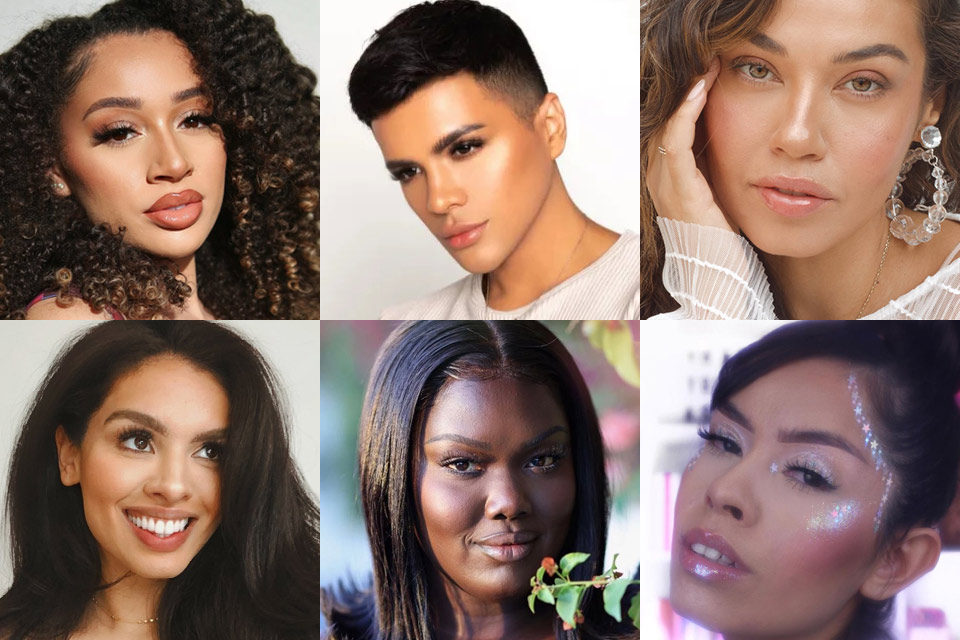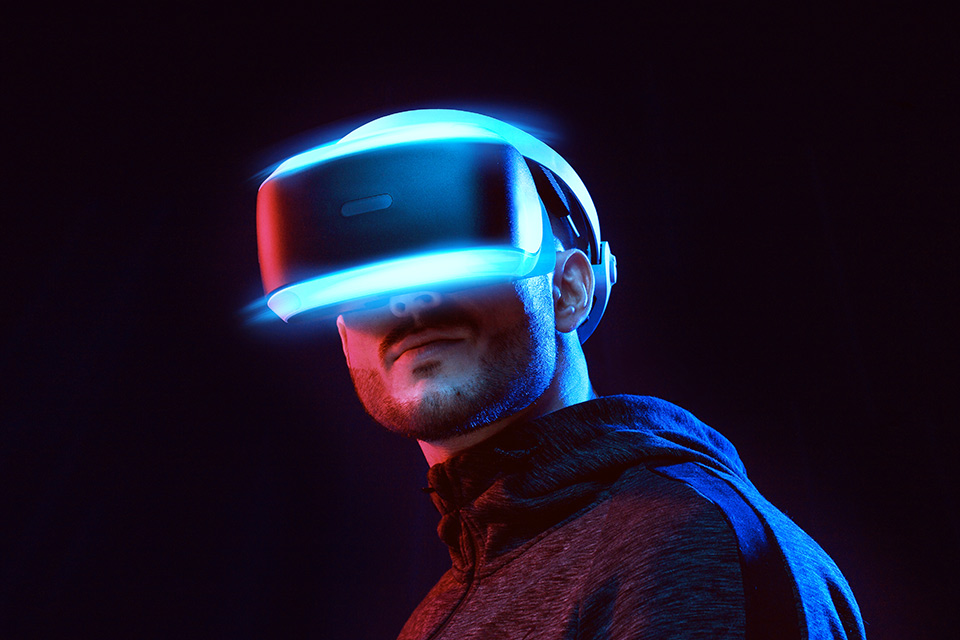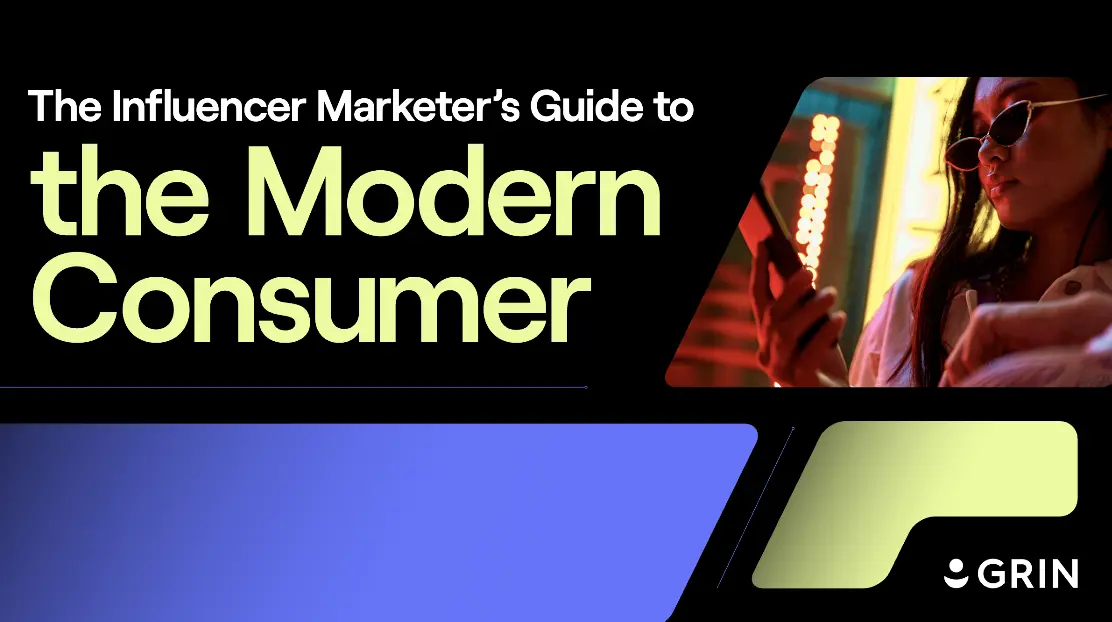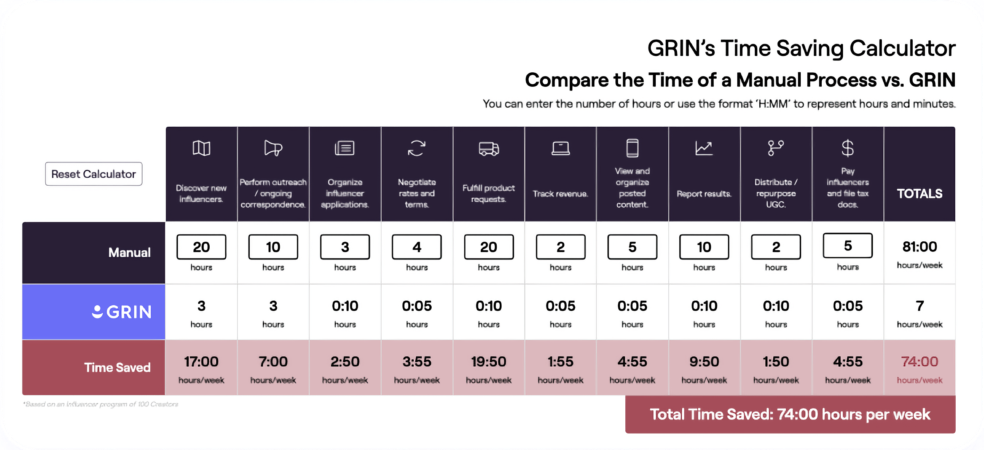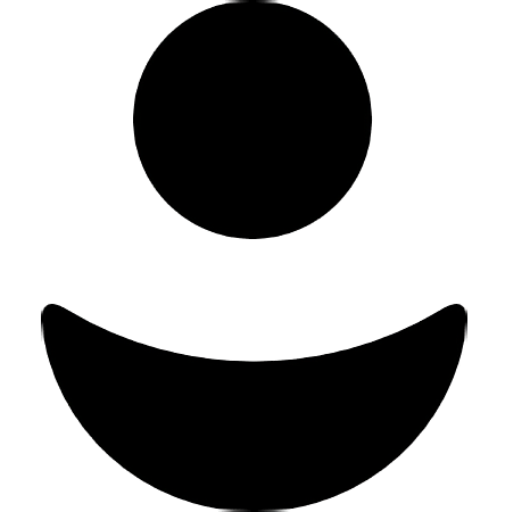Despite a renaissance of the #corset, we’ve come a long way since royal courts and imperial tastemakers dictated the latest styles in fashion.
In the creator economy, social media influencers set the tone for what’s hot and what’s not. Every fashionista with a smartphone now has the potential to jumpstart the next viral trend with just a quick video or photo of their outfit of the day.
Partnering with the right trendsetting creators produces a halo effect for brands often viewed as fashion pioneers by association. At the very least, influencer collaborations give brands an excellent opportunity to insert themselves into the next viral trend.
The history of marketing in the fashion industry
Fashion dealers and arbiters of style have always found a way to get the latest trends in front of eager consumers. From traveling dolls to augmented reality, the fashion industry has never lacked innovation, and its evolution shows no signs of slowing down.
Here is a quick look at how the industry has evolved over the years, setting the stage for the creator economy:
Pandoras

Beginning in the 16th century, European courts commonly relied on fashion dolls known as “pandoras” to discover the styles of the moment. Merchants meticulously outfitted each pandora with the latest fashion trends, allowing buyers to get a feel for the look before selecting their new custom-made garment.
Pandoras remained en vogue for nearly four centuries before more practical methods eventually replaced them. However, the spirit of the Pandora doll lived on through modern times with the release of Barbie, Bratz dolls, and other fashion-forward toy launches.
Fashion plates
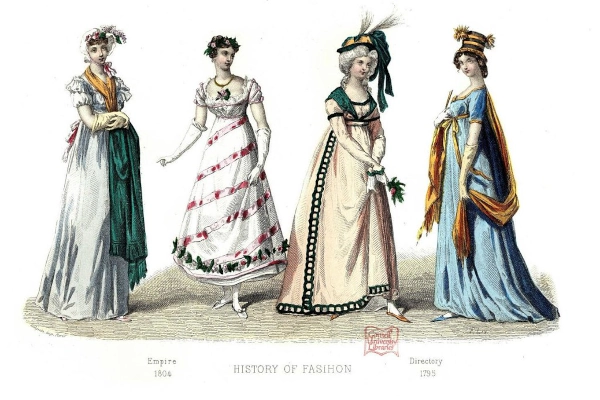
Fashion plates helped introduce 18th- and 19th-century women to the now rapidly changing styles coming out of London and Paris. Fashion plates were made through etching, line engraving, or lithographs to show tailors and dressmakers options for new clothes they could make or sell.
In 1672, France’s Le Mercure Galant became the first publication to report on the fashion world and introduce the middle class to emerging trends via fashion plates. Published in the mid-18th century, Lady’s Magazine used fashion plates to highlight its “habits of the year” and predictions for future style trends.
Fashion magazines

Fashion magazines became mainstream in the 19th century. Godey’s Lady Book (1830-1878) was one of the most popular of its time, known best for its hand-tinted fashion plates and progressive stance on women’s issues.
Voguepublished its first issue in 1892 and set the tone for fashion magazines as we know them today. The availability of these publications made fashion even more accessible to the average person and helped elevate the models and photographers whose work appeared in them to celebrity status.
Catalogs
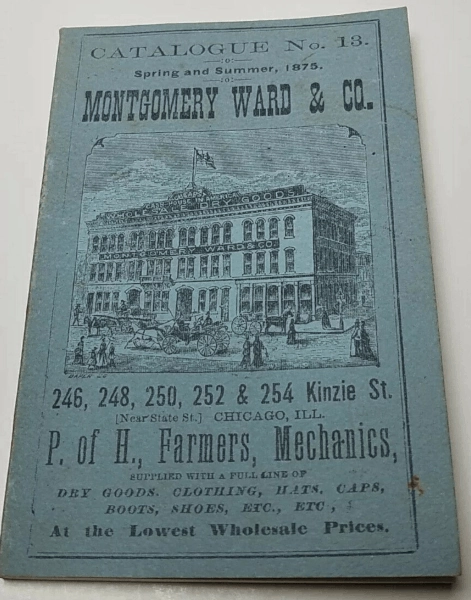
Mail order selling took off as settlers moved west across the United States in the late 19th century. Montgomery Ward & Company published the first mail-order catalog in 1872, which featured 162 products for sale and instructions for ordering. By 1904, the company’s mailing list included more than 3 million customers.
Catalogs remained the most lucrative form of “at home” shopping for more than a century. But by the late 1990s, consumers quickly shifted their attention to the internet as online shopping became prevalent in households across the globe.
A new millennium
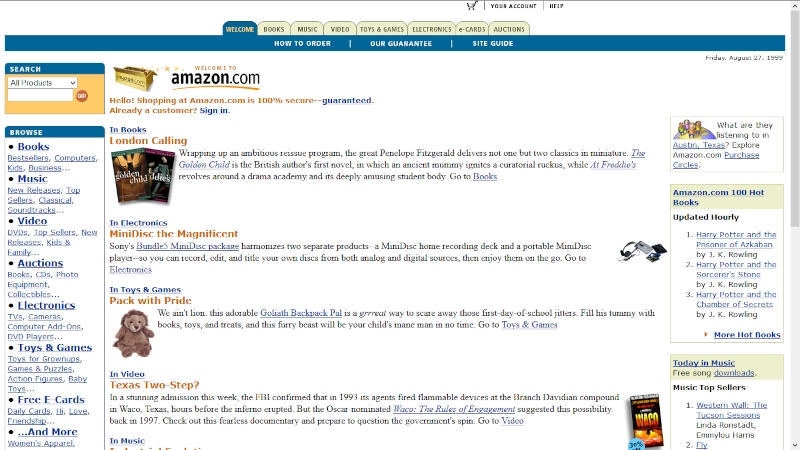
Online shopping became popular in 1995 when Amazon and eBay hit the scene. Nick Swinmurn launched Zappos in 1999, which vaulted online fashion platforms into the limelight.
What started as convenience has evolved into a dynamic ecosystem of discovery and purchase. This significant shift in the fashion industry, propelled by technological advancements, has drastically changed consumer behaviors. Direct-to-consumer (DTC) brands emerged, leveraging online platforms to build strong customer relationships and bypass traditional retail channels.
As the digital landscape evolved, so did the avenues through which consumers discovered and purchased fashion items. Social media platforms became powerful tools for brand promotion and customer engagement. Influencer marketing gained traction, with brands collaborating with social media personalities to reach wider audiences. This shift gave rise to social commerce, where consumers could purchase products directly through social media platforms like Instagram and TikTok.
The most recent evolution in this trajectory is creator commerce. In this model, individual content creators not only promote but also sell products directly to their audiences. Platforms like LTK (formerly LIKEtoKNOW.it) empower creators to curate personalized shopping experiences, blending content and commerce seamlessly.
These developments underscore a broader trend: the decentralization of fashion retail. Consumers now have multiple pathways to discover and purchase fashion items, whether through brand websites, social media platforms, or directly from their favorite creators. This shift not only offers consumers more choices but also empowers brands and creators to build more direct and meaningful relationships with their audiences.
Fashion industry statistics and trends in the creator economy
The fashion industry continues to evolve rapidly, influenced by technological advancements, shifting consumer behaviors, and the growing impact of the creator economy. Here are some of the most relevant statistics and trends shaping the landscape in 2025:
Brick-and-mortar isn’t dead
Despite the rise of digital shopping, physical retail still matters—now more than ever. Today’s stores aren’t just places to buy; they’re curated brand experiences designed to connect, not just convert.
Think influencer-hosted pop-ups, creator-led product drops, and tech-enhanced fitting rooms. Brands like Glossier are blending data from their digital channels to guide in-store experiences, while legacy retailers are teaming up with creators for live events and shoppable moments.In-store and online aren’t competing—they’re converging. And brands that integrate both are seeing the biggest wins.
Sustainability and resale market expansion

Image via eMarketer
Sustainability remains a key concern for consumers. Approximately 70% of consumers consider sustainability when making fashion purchases . This shift in consumer behavior has contributed to the growth of the resale market. In 2023, the secondhand and resale apparel market was valued at $197 billion, with platforms like Depop experiencing significant user engagement.
For brands, this trend opens up new business models and customer engagement strategies. Some are partnering with resale platforms; others are launching in-house programs that allow customers to trade in gently used pieces for store credit. Either way, resale is no longer a niche—it’s a pillar of modern fashion consumption, especially among Gen Z.
The creator economy’s expanding influence
The creator economy has become a significant force in fashion marketing. As of 2025, the global creator economy is valued at approximately $224.2 billion, with projections indicating it could surpass $2.71 trillion by 2037 . This growth reflects the increasing reliance on content creators to drive brand awareness and sales.Notably, creator-driven content has a substantial impact on purchasing decisions. In the U.S., nearly half (49.5%) of social shoppers have made purchases influenced by content from creators, influencers, or celebrities.
A personalized customer journey
One-size-fits-all marketing is officially out. Today’s consumers expect personalized experiences that reflect their unique tastes, behaviors, and purchase histories. From custom-fit product recommendations to creator-curated collections, personalization is shaping the way fashion brands connect with shoppers.
AI-driven tools and data from creator-led campaigns allow brands to tailor everything—from email content to product landing pages—to individual preferences. Influencer and creator partnerships play a major role in this evolution. When consumers discover products through a creator they follow and trust, the experience feels more personal—and leads to stronger brand loyalty.
How fashion industry brands leverage influencer marketing
Apparel and accessories have the largest social media footprint in the U.S., accounting for more than 53% of all posts and post engagements across Facebook, Instagram, and Twitter. The second-most is consumer electronics, with 11.5%. As a result, more than 50% of Gen Z and Millennials agree social networks are essential information sources for shopping decisions.
Social media creators are the driving force behind these online shopping decisions. Influencers have become some of the most prominent trendsetters in the fashion industry and inspire audiences by showcasing the latest styles and product releases.
The most successful brands collaborate with creators who match their brand identity and genuinely love their products. Influencers who check these boxes put brands in a unique position to partner someone who can simultaneously act as a model, storyteller, and brand ambassador, all while giving honest product endorsements to an engaged target audience.
Fashion brands with successful influencer marketing campaigns
SKIMS
SKIMS, the shapewear and apparel brand founded by Kim Kardashian, is a masterclass in balancing macro and micro influencer strategies. While celebrity campaigns create instant buzz, SKIMS also leverages an army of creators and customers to build social proof at scale.The brand frequently sends PR packages to a wide range of creators—from fashion editors to everyday TikTokers—encouraging unboxings, try-ons, and styling tips. This approach has helped SKIMS dominate across platforms like Instagram and TikTok.
Aritzia
Aritzia, the Canadian fashion retailer known for its elevated basics, has found major success by collaborating with lifestyle and fashion-forward micro influencers on platforms like Instagram and TikTok. Instead of flashy paid ads, Aritzia focuses on organic-feeling content—think “day in the life” vlogs, outfit-of-the-day posts, and seasonal styling hauls.The brand’s Super Puff jacket became a viral staple thanks to TikTok creators showing how they styled it in everyday life. By leaning into authentic, creator-led storytelling, Aritzia has stayed top-of-mind with Gen Z and millennial shoppers.
ASOS
ASOS is an online clothing marketplace featuring more than 850 brands. Some of the brand’s most successful partnerships are with young, vibrant YouTube influencers who showcase products through “unboxing” videos. Creators add an affiliate link to each product featured in the video from which they receive a portion of revenue from each purchase.
ASOS was also one of the first brands to employ its own in-house influencer team. The creators, known as ASOS Insiders, sign on with the brand for long-term collaborations and produce content exclusively for ASOS from a branded Instagram account.
Gucci
Gucci is one fashion brand that has always been on the cutting edge of the fashion industry. Lately, it has fully focused its attention on the Gen Z demographic through collaborations with K-pop artists, streetwear designers, and influencers.
But one of Gucci’s more innovative campaigns invited creators to openly poke fun at the brand online. The #guccimodelchallenge encouraged creators to compete for the “best” Gucci model look. The campaign went viral and created tons of user-generated content for the brand, the best of which Gucci featured on its official TikTok channel.
Levi’s
Levi’s has always had success as an early adopter of new trends and marketing techniques. The brand’s “Buy Better, Wear Longer” campaign enlisted the support of top Gen Z influencers like rapper Jaden Smith and Manchester United star Marcus Rashford who encouraged fans to wear Levi’s denim longer to help counteract the environmental impacts of consumerism and production.
During the COVID-19 pandemic, Levi’s was one of the first brands to experiment with TikTok’s “Shop Now” button that enables consumers to purchase items through links posted on the platform. Levi’s recruited popular TikTok creators to design jeans with its Future Finish 3D denim customization technology, which their audiences could purchase on Levi’s website. Levi’s reported that the watch time for these videos was twice as long as the platform average.
DSW
DSW saw benefits from TikTok influencer marketing quickly after launching its first campaign on the platform. For them, TikTok is a “try space” where the brand can experiment with new trends and tactics that might not always work on some of the older platforms.
“Every other social channel we’re on, we have very specific KPIs, and we have certain metrics that we need to hit. But TikTok is this free space. One of our graphic designers was like, ‘I love TikTok.’ And we were like, ‘You’re hired.’ She’s been working with our team to come up with new things to do, new stuff to try, things that are trending.”
— Maria Wollenburg, DSW manager of social media and content
DSW’s #TooManyShoes TikTok campaign generated 1.7 billion views in a matter of days. Spearheaded by a handful of popular TikTok influencers, the hashtag challenged DSW fans to show off their shoe closets for a chance to win a $500 gift card.
Marc Jacobs
In 2014, Marc Jacobs put out a casting call for aspiring models on Instagram and Twitter. He invited users to submit videos under the hashtag #CastMeMarc, and the brand selected its favorites to appear on the Marc by Marc Jacobs AW14 campaign. The tactic produced more than 70,000 pieces of user-generated content and gave nine brand superfans their chance to appear in a massive ad campaign.
The brand also ran a five-day influencer takeover for its Daisy Love Marc Jacobs fragrance launch in 2018. The takeover occurred at the Santa Monica Pier—one of the more “Instagrammable” locations on the West Coast. Forty international influencers hosted the event, which featured light shows, games, a branded ice cream cart, and complimentary product vouchers to celebrate the launch.
Key takeaway: The fashion industry and the creator economy continue to grow—together.
Partnering with influencers helps fashion brands keep their finger on the industry pulse and stay top of mind with consumers in their target market. The brands that remain innovative in their marketing approach and allow influencers the freedom they need to produce high-performing content will be the ones who see the best ROI and drive the most conversions from their campaigns.



